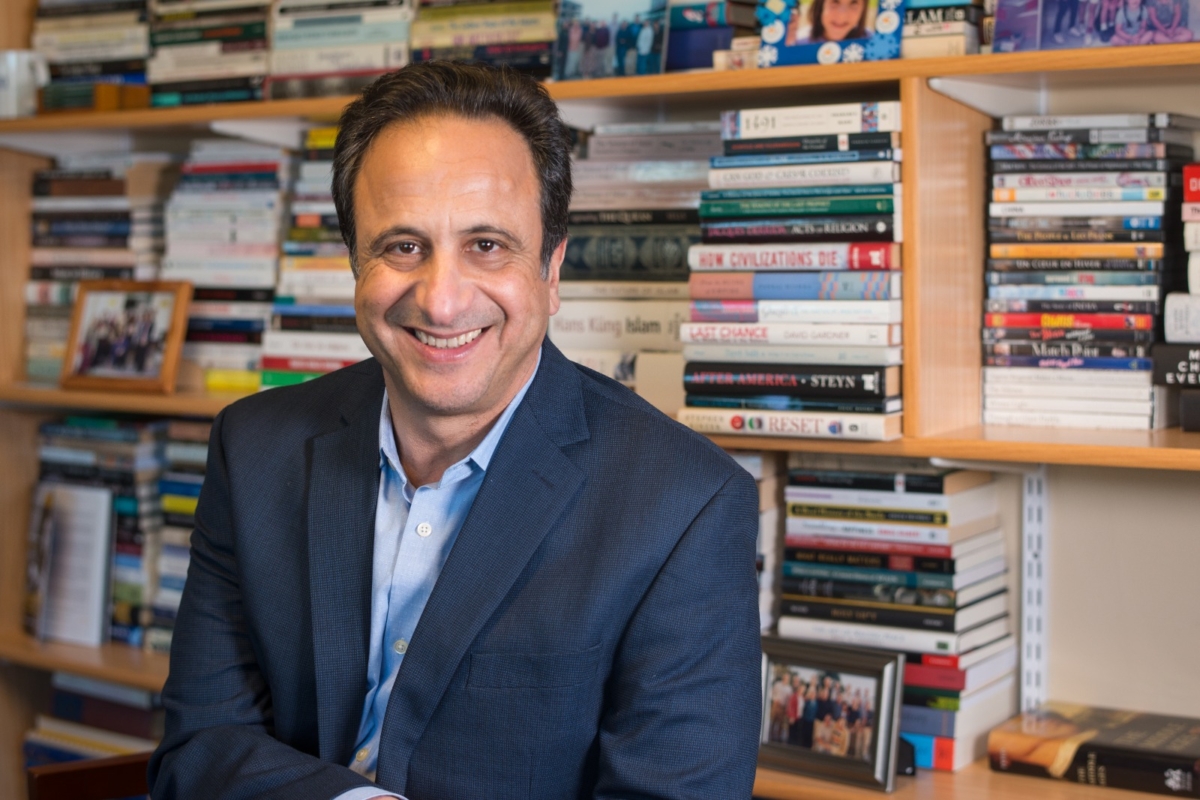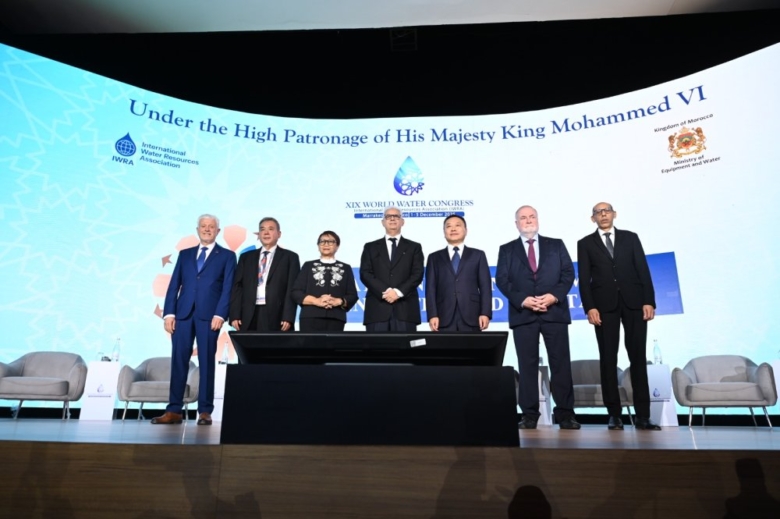Over the last few decades, a consensus has been growing in major hubs of science and technology, especially in the United States, that the human race as we know it is on the verge of extinction and will be replaced by a new species of artificial creatures without a human body and its complex brain. This is not science fiction or conspiracy theory thinking. This is as real as it gets, and yet there is a general amnesia about this shocking fact because, I suspect, few people are equipped to grasp the technical details of artificial intelligence or other technologies that are ruling our lives. Fewer still can glimpse and truly understand the religious and philosophical foundations that are in the process of destroying humanity. We are dealing with a phenomenon with no historical precedent. Let me repeat this: We are confronting a situation that has never happened since the emergence of Home sapiens some 300,000 years ago. As the popular historian Yuvan Noah Hariri put it recently in an interview, “The most important thing to know about artificial intelligence is that it is not a tool, like previous human inventions. It is an agent, in the sense that it can make decisions independent of us.” Nuclear bombs do not drop themselves on people without human agency, but artificial intelligence makes its own decisions and acts without regard to our wishes.
Seeking to be at the vanguard of the future, Muslim nations are racing to invest heavily in artificial intelligence, believing that such early actions would turn them into major players in the global economy. For example, in July 2025, Morocco’s prime minister addressed a forum on AI and its importance for Morocco’s development, calling for an approach that is in harmony with Morocco’s cultural and religious values, one with a Moroccan DNA. This is a laudable goal to have, but, like the vast majority of intellectuals and scholars on our planet, Muslim leaders simply have no idea about the hidden vision that led to the creation of Artificial Intelligence.
Artificial intelligence hasn’t been designed to preserve traditional human values, but to eradicate them and dispense with them altogether. We are, as Elon Musk told CEO Jack Ma of Alibaba in a 2019 debate, mere fodder for our successor species. “You could sort of think of humanity,” Musk said, “as a biological bootloader for digital superintelligence.” In this posthuman future," wrote Joe Allen in his 2023 book Dark Aeon, "the bits and bytes of our personalities will be digitized and transferred to an e-ghost who goes on evolving in endless virtual space, even after our bodies die. In other words, to upgrade our limited humanity, as described by a cabal of geniuses whose hub is Silicon Valley or San Francisco, is to self-destruct in favor of a more evolved, God-like species."
More than three decades earlier, Vernor Vinge, an American professor of mathematics and a science fiction writer who popularized the concept of “Singularity,” presented a paper at NASA predicting that “Within thirty years, we will have the technological means to create superhuman intelligence. Shortly thereafter, the human era will be ended.” This is the same view held by the maverick transhumanist Hugo de Garis, who argued that the rise of that “artilects” or “artificial intellects, will spell the end of humanity as we know it.
Western technologies of the last century, including nuclear power, space exploration, genetic engineering, the Internet, and artificial intelligence, to name only the most prominent ones, are not ideologically innocent enterprises seeking the improvement of the world’s cultures and traditions. Although the pioneers and leaders associated with these inventions may be secular and profess genuine humanitarian ideals, they are unconsciously writing the latest chapter in an aspect of Christian ideology that, for reasons still not fully understood, emerged in the Middle Ages. We assume that evidence-based scientific work clashes with the supernatural worldview of religions and that technology has a neutral impact of our cultures and traditions. But that is not the case at all. It is quite possible that the whole Western scientific program Muslims have adopted with pride is in direct conflict with the basic tenets of their faith. It could amount to a major transgression against Allah’s will. I will explain this at the end of this article after tracing the Christian roots of the doomsday technologies that are on the verge of destroying our cultures and religions.
T
As the twentieth century was coming to a close, the freethinking Jewish scholar David F. Noble published a masterpiece of historical research that unveils the prevailing illusion that we have bypassed the Christian faith and now live in a purely secular world. In The Religion of Technology, Noble casts his eye on many centuries of European history to argue that modern technology is rooted in Christian beliefs that are more than seven hundred years old and that, by implication, without this enduring Christian worldview, our technologies would not have taken the course they have.
At some point in the early Middle Ages, a shift of religious outlook occurred within the Christian community when the practical labor (hitherto associated with slaves and women) that had been disdained by Christian elites like St. Augustine as a distraction from spiritual devotion and the quest for grace was recast by Benedictine monks as indispensable for the Christian faith since productive work helps elevate man and restore his God-likeness that was lost after Adam’s fall from Paradise.
In the following centuries, the alchemists and illuminati were motivated by the same will to correct Adam’s mistake. “Because of the darkness caused by Adam’s sin,” wrote the German polymath Cornelius Agrippa, “the human mind cannot know the true nature of God by reason, but only by esoteric revelation.” He argued that “it was precisely this power over nature which Adam had lost by original sin, but which the purified soul, the magus, now could regain.” He argued that “an illuminated soul” would allow us to return “to something like the condition before the Fall of Adam, when the seal of God was upon it and all creatures feared and revered man.”
England’s conquest of America in the seventeenth was motivated by a similar millenarian spirit. Adam’s disgrace occupied a central role in this doctrine. Because he forfeited “total dominion” through the Fall, the focus was on how the useful arts could help reverse the decline and exile suffered by humans since then. “The technological discoveries of the Renaissance, particularly those relating to gunpowder, printing and navigation,” wrote the British historian Charles Webster, “appeared to represent a movement towards the return of man’s dominion over nature.”
Not only did Robert Boyle, the founder of the Royal Society of London, call for the renewal of Adamic knowledge, but he also thought that the new scientists of his age could supersede Adam himself and assist God in finishing the project of creation. “Despite their caveats about the necessity of humility,” Noble comments, “and despite their devout acknowledgment of divine purpose in their work, the scientists subtly but steadily began to assume the mantle of creator in their own right, as gods themselves.” Empowered by the compounding effects of science and technology, scientists were slowly moving away from the medieval quest for immanence to one of transcendence. Instead of seeking a restoration to Adam’s condition before his fall, they now aspired to do better than him and be co-creators with God.
The English discovery of America was akin to a return to Eden, and Americans, in a sense, were new Adams. The poet Walt Whitman saw himself as the “chanter of Adamic songs, through the new garden the West.” The civil engineer John Adolphus Etzler was dedicated to re-establishing “the Paradise that Adam lost for mankind.” The Harvard professor Jacob Bigelow, who coined the term “technology,” announced that “we have acquired a dominion over the physical and moral world, which nothing but the aid of philosophy could have enabled us to establish.”
Choosing the engineer as their new protagonist and spiritual hero in the millenarian cosmic drama, the Freemasons opened their Constitutions of the 1720s with this sentence: “Adam, our first parent, created after the Image of God, the Great Architect of the Universe, must have had the Liberal Sciences, particularly Geometry, written on his Heart; for ever since the Fall we find the principles of it in the Hearts of his offspring . . . . ” The Freemasons pioneered the field of civil engineering (“to distinguish it from a military function”), founded the first professional engineering school, the École des Ponts et Chaussées, as well as the École Polytechnique in Paris, “which became the world’s premier engineering school.”
Closer to our era, the scientist Leo Szilard who played a major role in developing a nuclear chain reaction and the first atomic bomb in 1945 recommended the field of “nuclear physics” because “only through the liberation of atomic energy could we obtain the means which would enable man not only to leave the earth but to leave the solar system.” Edward Teller, who worked on the H-bomb project, displayed a “religious dedication to thermonuclear weapons.” While the possibility of Armageddon delighted the evangelical preacher Jerry Falwell who asked his followers to anticipate “a nuclear holocaust” that would allow “God to dispose of this Cosmos,” other scientists in the nuclear family, echoed Szilard’s dream (inspired by H. G. Wells’ novel The World Set Free), and fantasized about escaping this impending holocaust by leaving the planet in a starship. Rod Hyde, inventor of nuclear-weapons technology and designer of his own “nuclear-bomb-propelled starship,” couldn’t have been clearer: “What I want more than anything is essentially to get the human race into space. It’s the future. If you stay down here some disaster is going to strike and you’re going to be wiped. If you get into space and spread out there’s just no chance of the human race disappearing.”
Exploring space and escaping from a fallen world is also a centuries-old European idea. During the seventeenth century, the millenarian mystic Tommaso Campanella wrote to Galileo explaining how he had “read new meaning into a familiar verse, ‘and I saw a new Heaven and a new earth’—namely, that the moon and the planets were inhabited.” Johannes Kepler wrote a friend asking: “Would it not be excellent to describe the cyclopic mores of our time in vivid colors, but in doing so—to be on the safe side—to leave this earth and go to the moon?” He even dreamt of being catapulted into space as if shot from a cannon. The English philosopher and bishop John Wilkins later commented that “so soon as the art of flying is found out, some of their Nation will make one of the first colonies that shall inhabit that other world.” By the nineteenth century, these speculations turned into solid prophecy in the writings of the French Jules Verne, who was inspired by Kepler.
In his 1865 novel From the Earth to the Moon, Verne predicted the entire cycle of launching a capsule into space and splashing it back at sea. Perhaps this would be the way to create The Eternal Adam, as he titled his last work. “Project Adam” would also have been the name of the U.S. Army Ballistic Missile Agency to launch a man into space in 1959. When the first manned flight to the moon took place in 1968, the first thing the astronauts broadcast back to the world was the first ten lines in the Book of Genesis. And when Apollo 11 returned from the moon following its lunar landing, President Richard Nixon announced that “This is the greatest week since the beginning of the world, the Creation.” It is for this reason that the American historian Walter McDougall wrote that “we have never, from Protagoras to Francis Bacon to Tsiolkovsky, been able to separate our thinking about technology from teleology or eschatology.”
T
Finding refuge in space and populating another planet do not, in the end, change human nature, which is painfully entrapped in a very mortal body. Many in the techno-utopian world believe that the body is a hindrance to pure thought, which is the divine and immortal aspect of humans. When René Descartes imagined “thinking without the body,” he, in a way, validated the quest for a pure thinking machine that would dispense with the body altogether and be rejoined to God in a pure state. The troubled genius English mathematician Alan Turing, who was behind the creation of electronic computers and artificial intelligence, stated that “we may hope that machines will eventually compete with men in all purely intellectual fields.” More than that, he envisaged a time when such machines would not only transcend the body but also human intelligence itself.
Like space exploration, artificial intelligence was officially launched as a military project in 1956, at the height of the Cold War. Mark Minsky, a leading member who directed the artificial intelligence project at the Massachusetts Institute of Technology, was clear about the indisputable value of machines over flesh-and-blood humans, whose bodies are nothing more than a “bloody mess of organic matter” and their brains a mere “meat machine.” Notions of “cyborgs” and “cyberspace” were coined to describe this emerging reality. Cyberspace became Paradise Found, “a place where we might re-enter God’s graces . . . laid out like a beautiful equation,” wrote the president of a software company in Texas.
To attain a “postbiological” state of pure thinking, it behooves the mind to free itself from the brain. Mortal Homo sapiens would thus be replaced with immortal Machina sapiens. The demise of flesh-and-blood human beings and their replacement with artificial intelligence would simply be the next phase in the long story of evolution. Just like a brain needs a body to sustain it, so does artificial intelligence need silicon-based artificial life to keep it functioning. By so doing, biology-bound humans will produce a post-human species. “With the advent of artificial life,” said J. Doyne Farmer, one of the leading advocates of artificial life in the 1980s, “we may be the first species to create its own successors.”
In the 1920s, the Irish life scientist and X-ray crystallographer J. D. Bernal could matter-of-factly declare that “normal man is at an evolutionary dead end.” In his view, a time might come when “consciousness itself may end or vanish in a humanity that has become completely etherealized, losing the close-knit organism, becoming masses of atoms in space communicating by radiation, and ultimately perhaps resolving itself into light.” As the American geneticist Elving Anderson would put it decades later, “the earth does not need more humans.” Long before Elon Musk brought the world’s attention to the possibility, Anderson was already dreaming of colonizing Mars.
T
As these doomsday technologies are being invented and perfected, their promoters keep resorting to public relations and marketing strategies, trying to convince the world’s captive populations that such technologies, if used wisely, are designed to enhance the quality of human life. Instead of understanding the ideological origins of these technologies and their long-term ramifications, educated people around the world, including intellectuals, academics, and political leaders, have become part of a global chorus mindlessly rehearsing the catchphrase that AI will enhance productivity and efficiency. The downside of artificial intelligence is the elimination of many tedious professions when superintelligent machines start doing the work for us, and the upside is the opening up of new possibilities for leisure, thinking, and the enjoyment of a cornucopia of riches that technology will make available. (As I am writing this, Nvidia, the leading manufacturer of AI chips, has just added three trillion dollars to its worth, which now makes it a $4 trillion public company.)
One of the ambiguously reassuring apostles of artificial intelligence is the former director of Google, Eric Schmidt, who, along with Craig Mundie of Microsoft and the late Henry Kissinger, published a book last year, not unsurprisingly titled Genesis, to discuss the pros and cons of artificial intelligence. Despite the soothing tone of the volume and the authors’ resort to examples from history, there is no doubt that if humans don’t cooperate with the machine and evolve into Homo technicus, they will be outpaced and left behind. Should rivalries emerge among nations, which is to be anticipated, then only entities with the most powerful AI systems will prevail in kinetic wars that generally spare humans and destroy machines. Surrender, the authors of Genesis tell us, “will come not when the opponent’s numbers are diminished and its armory empty but when the survivors’ shield of silicon is rendered incapable of saving its technological assets, and finally its human deputies. War could evolve into a game of purely mechanical fatalities. . . .” Today’s superpowers like the United States and China would probably be safe in this new world order, but Muslims and Africans will have no power to resist a digital carpet bombing.
At this point, the Christian millenarian goals that propelled the centuries-long European quest for mechanical perfection have become all but forgotten, despite the recurring references to the Bible in books and papers. But Noble’s thesis, based as it is on a study of the European social imaginary, is the only one that should make sense, at least to Muslims. To my knowledge, almost no one seems to be aware that such technologies were designed to destroy the descendants of Adam and replace them with a new dynasty of immortal creatures whose power surpasses that of Adam and God combined. It’s not far-fetched to imagine an all-powerful algorithm dethroning old gods and turning into the Almighty deity of the future. The historian Hariri warned against this potential “digital dictatorship,” but he also consecrated Silicon Valley, the epicenter of most of these anti-human technologies, as the “New Jerusalem.” In line with this remapping of sacred geography, he told the World Economic Forum in 2020 that “The twin revolutions of infotech and biotech are now giving politicians and business people the means to create heaven or hell.” Without the hubris of those seeking to supersede the biblical god, Harari limits his prediction to the mere restoration of Adam to his prelapsarian status: “When biotechnology, nanotechnology and the other fruits of science ripen, Homo sapiens will attain divine powers and come full circle back to the biblical Tree of Knowledge.”
T
In 2023, a group of Heredi rabbis in New York, quoting the Bible and previous rabbinic rulings, published a proclamation condemning artificial intelligence because it "enables abomination, heresy and treachery without limits." The reasons they give for such a prohibition don’t seem to include the fall of Adam, the arrogant attempt to restore him to his lost paradise through the development of mechanical and useful arts, or even to join God in the act of creation.
Muslim scholars have now a golden opportunity to give their own opinions on the matter because the whole Christian millenarian project of restoring Adam to his pure state through the development of technology or the recent arrogant conviction that artificial engineering and genetic engineering would create a new immortal species from the vast wasteland of the Internet and make humanity redundant are a grave form of disbelief. Nothing prevented God from keeping Adam in his Edenic environment or creating an immortal species, but, according to the Quran, He molded the first human from clay or black mud and asked his devoted angels (fashioned from light, according to a hadith) to prostrate to him. They thought it was a bad idea and protested. God insists and tells them that His will be done. And when Adam and his mate Eve violate their promise to God not to approach a forbidden tree, their naked bodies are exposed and, after God forgives them, they are expelled from Paradise and sent in their flawed human nature to earth. 'Therein you shall live, and therein you shall die, and from there you shall be brought forth,” God tells the forlorn couple. The ultimate goal of a Muslim, then, is to seek mercy through prayer and devotion with the hope of recovering the paradisical world Adam lost. This is the human condition as God intends it. God chose His mud-made creatures as His viceregents, not his obedient, flawless angels made of light. The “artilects” that the apostles of artificial intelligence want to replace biological creatures, displace Adam, and become gods in their own right are, in fact, like the fallen angel Satan, who refused to prostrate to Adam and who is bent on misleading humanity. This is why, in my opinion, the AI project should be taken very seriously by Muslims and all religious people around the world.
*Moroccan-American Intellectual and Professor Emeritus at the University of New England in the United States







